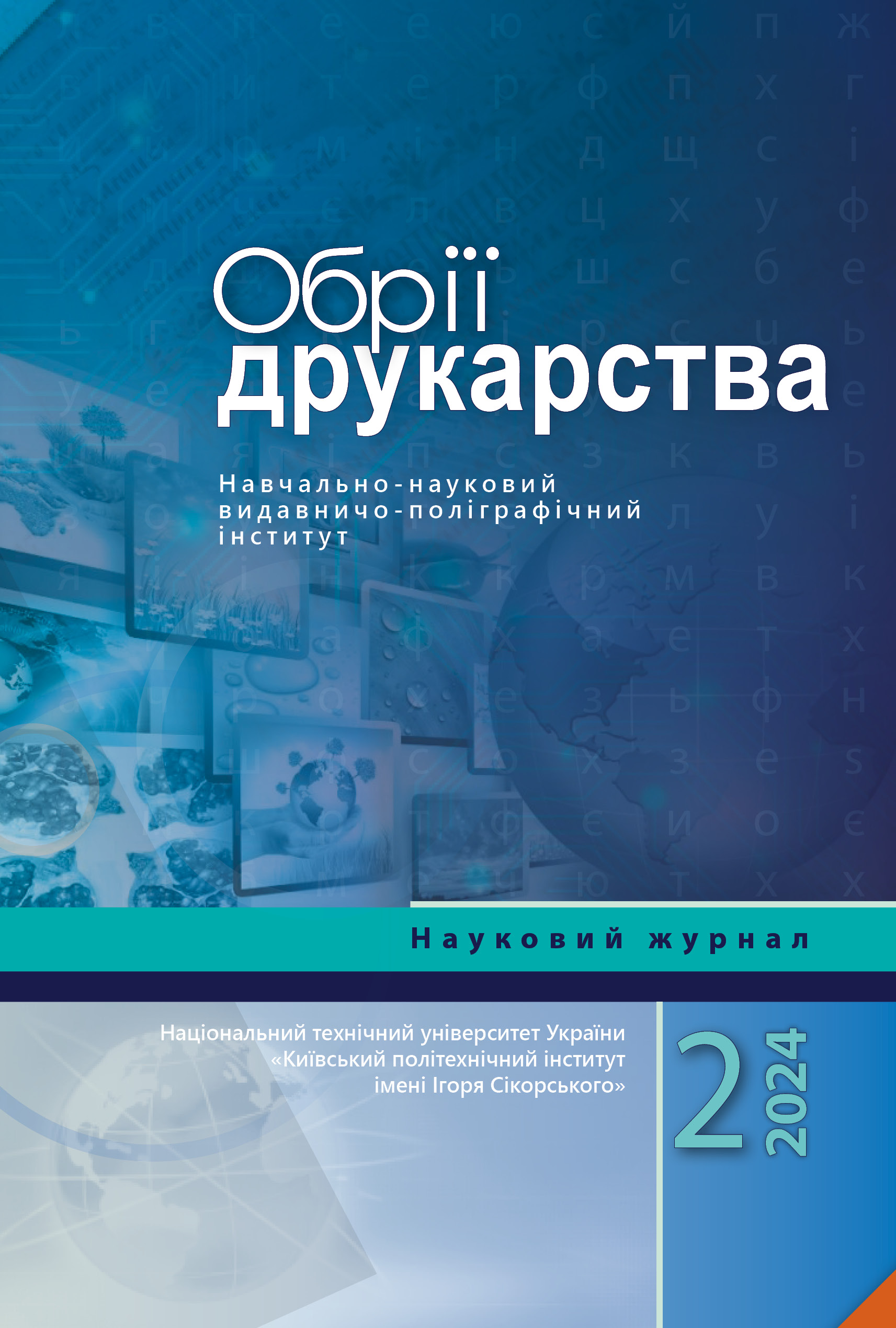Стратегічна комунікація Росії у повномасштабній Російсько-українській війні: аналіз з використанням моделі комунікації Лассвелла
DOI:
https://doi.org/10.20535/2522-1078.2024.2(16).319282Ключові слова:
стратегічна комунікація, стратегічні наративи, модель Лассвелла, Російсько-українська війна, масові комунікаціїАнотація
Оскільки з початку повномасштабної Російсько-української війни змінився контекст стратегічної комунікації Росії, знову виникає дослідницька потреба в її концептуалізації. Це дослідження націлене на опис ключових характеристик стратегічної комунікації Росії воєнного часу. У межах цієї роботи класична модель комунікації Гарольда Лассвелла (1971) застосовується для аналізу (дедуктивний підхід) п’яти елементів комунікації Росії: комунікатора, контенту, отримувача, каналу й ефекту. Аналіз висвітлює багатосторонню структуру стратегічної комунікації Росії, а також її значні суперечності та прогалини. Дослідження надає теоретичне підґрунтя для подальших досліджень інформаційної війни Росії.
Corrigendum: автором до переліку ключових слів додано термін «масові комунікації».
Посилання
Aspriadis, N. (2023). Preparing for War: Strategic Narratives and Disinformation in Leadership Rhetoric during the Ukraine War. ESSACHESS – Journal for Communication Studies, 16, 1(31), 21-41. https://doi.org/10.21409/9037-1Y61
BBC. (March 6, 2023). Russia media guide. URL: https://www.bbc.com/news/world-europe-17840134
Bradshaw, S., Elswah, M., Haque, M., Quelle, D. (2024). Strategic Storytelling: Russian State-Backed Media Coverage of the Ukraine War. International Journal of Public Opinion Research, 36(3). https://doi.org/10.1093/ijpor/edae028
Chivvis, C. S. (2017). Understanding Russian “Hybrid Warfare”. Rand Corporation.
Drugă, D. (2023). War in Ukraine: Russian Propaganda Themes. Strategic Impact, 84, 80-93. 10.53477/1842-9904-22-18.
Erlich, A., & Garner, C. (2023). Is pro-Kremlin Disinformation Effective? Evidence from Ukraine. The International Journal of Press/Politics, 28(1), 5-28. https://doi.org/10.1177/19401612211045221
Farwell, J. P. (2012). Persuasion and Power: The Art of Strategic Communication (Washington, Georgetown University Press.
Fridman, O. (2020). ‘Information War’ as the Russian Conceptualisation of Strategic Communications. The RUSI Journal, 165(1), 44–53. https://doi.org/10.1080/03071847.2020.1740494
Fridrichová, K. (2023). Mugged by reality: Russia's strategic narratives and the war in Ukraine. Defense & Security Analysis, 39(3), 281-295. DOI: 10.1080/14751798.2023.2201018
Godzimirski, J. M., & Østevik, M. (2018). How to understand and deal with Russian strategic communication measures? Norwegian Institute of International Affairs (NUPI). http://www.jstor.org/stable/resrep17626
Siedin, O., & Zadyraka, K. (November 1, 2024). Internal Propaganda: How the Kremlin Uses and Tames the “Z-Telegram”. Detector Media. URL: https://en.detector.media/post/internal-propaganda-how-the-kremlin-uses-and-tames-the-z-telegram
Johansson-Nogués, E., Şimanschi, E. (2023). Fabricating a war? Russian (dis)information on Ukraine. International Affairs, 99(5), 2015-2036. https://doi.org/10.1093/ia/iiad179
Lange-Ionatamishvili, E., Svetoka, S., & Geers, K. (2015). Strategic communications and social media in the Russia Ukraine conflict. NATO Strategic Communications Centre of Excellence.
Lasswell, H. (1971). The Structure and Function of Communication in Society. In Schramm W. and D. F. Roberts (Eds.), “The Process and Effects of Mass Communication” (pp. 84-99). University of Illinois Press.
Liik, K. (2017). What Does Russia Want?. ECFR. URL: http://www.ecfr.eu/article/commentary_what_ does_russia_want_7297.
Mandić, J., & Klarić, D. (2023). Case study of the russian disinformation campaign during the war in Ukraine–propaganda narratives, goals, and impacts. National security and the future, 24(2), 97-140. https://doi.org/10.37458/nstf.24.2.5
Oleinik, A., & Paniotto, V. (2024). Propaganda channels and their comparative effectiveness: The case of Russia’s war in Ukraine. International Sociology, 39(3), 217-240. https://doi.org/10.1177/02685809241232637
Paul, C. (2011). Strategic Communication: Origins, Concepts, and Current Debates. Bloomsbury Academic.
Peng, W. (2015). Analysis of New Media Communication Based on Lasswell’s “5W” Model. Journal of Educational and Social Research, 5, 245.
Pivtorak, O., Bidochko, L., Khudish, P. (2023). War and The Battle of Narratives: Understanding Russian Propaganda in the Media Landscape of the Global South. Detector Media. URL: https://en.detector.media/post/war-and-the-battle-of-narratives-understanding-russian-propaganda-in-the-media-landscape-of-the-global-south?fbclid=IwAR2RP8CrgXzDJqxVktP8omNKqmXWzCcfXxQ7FHTPSpTaamfaesm3HaQTYmk
Radin, A. and Reach, C.B. (2017). Russian Views of the International Order. RAND Corporation.
Shevchenko, V. (April 4, 2023). Ukraine war: Who are Russia's war bloggers and why are they popular?. bbc.com. URL: https://www.bbc.com/news/world-europe-65179954
Snigyr, O. (2023). Russian Strategic Narratives, 2022-2023. Orbis, 68(1), 3–23. https://doi.org/10.1016/j.orbis.2023.11.002
Snyder, T. (2018). The Road to Unfreedom. Russia, Europe, America. Tim Duggan Books.
Soares, F. B., Gruzd, A., & Mai, P. (2023). Falling for Russian Propaganda: Understanding the Factors that Contribute to Belief in Pro-Kremlin Disinformation on Social Media. Social Media + Society, 9(4). https://doi.org/10.1177/20563051231220330
Sundermann, G. & Raabe, T. (2019). Strategic Communication through Social Media Influencers: Current State of Research and Desiderata. International Journal of Strategic Communication, 13(4), 278-300. DOI: 10.1080/1553118X.2019.1618306
##submission.downloads##
Опубліковано
Версії
- 2025-10-12 (2)
- 2024-12-27 (1)
Як цитувати
Номер
Розділ
Ліцензія
Авторське право (c) 2024 Кузьменко Г.

Ця робота ліцензується відповідно до Creative Commons Attribution 4.0 International License.
Автори, які публікуються у цьому журналі, погоджуються з наступними умовами:
- Автори залишають за собою право на авторство своєї роботи та передають журналу право першої публікації цієї роботи на умовах ліцензії Creative Commons Attribution 4.0 International License, котра дозволяє іншим особам вільно розповсюджувати опубліковану роботу з обов'язковим посиланням на авторів оригінальної роботи та першу публікацію роботи у цьому журналі.
- Автори мають право укладати самостійні додаткові угоди щодо неексклюзивного розповсюдження роботи у тому вигляді, в якому вона була опублікована цим журналом (наприклад, розміщувати роботу в електронному сховищі установи або публікувати у складі монографії), за умови збереження посилання на першу публікацію роботи у цьому журналі.

